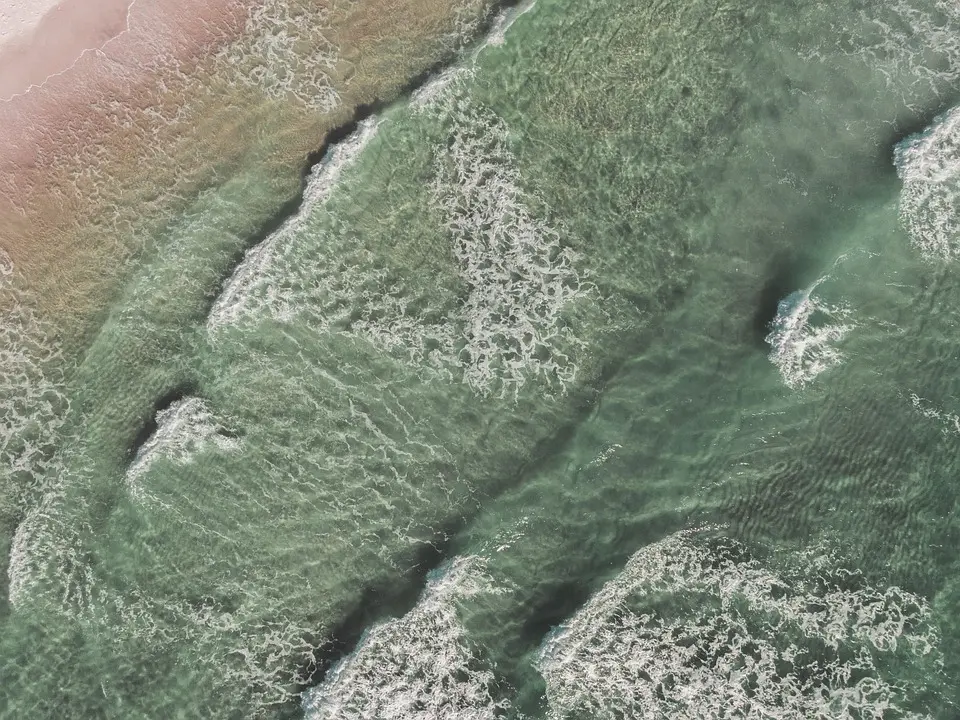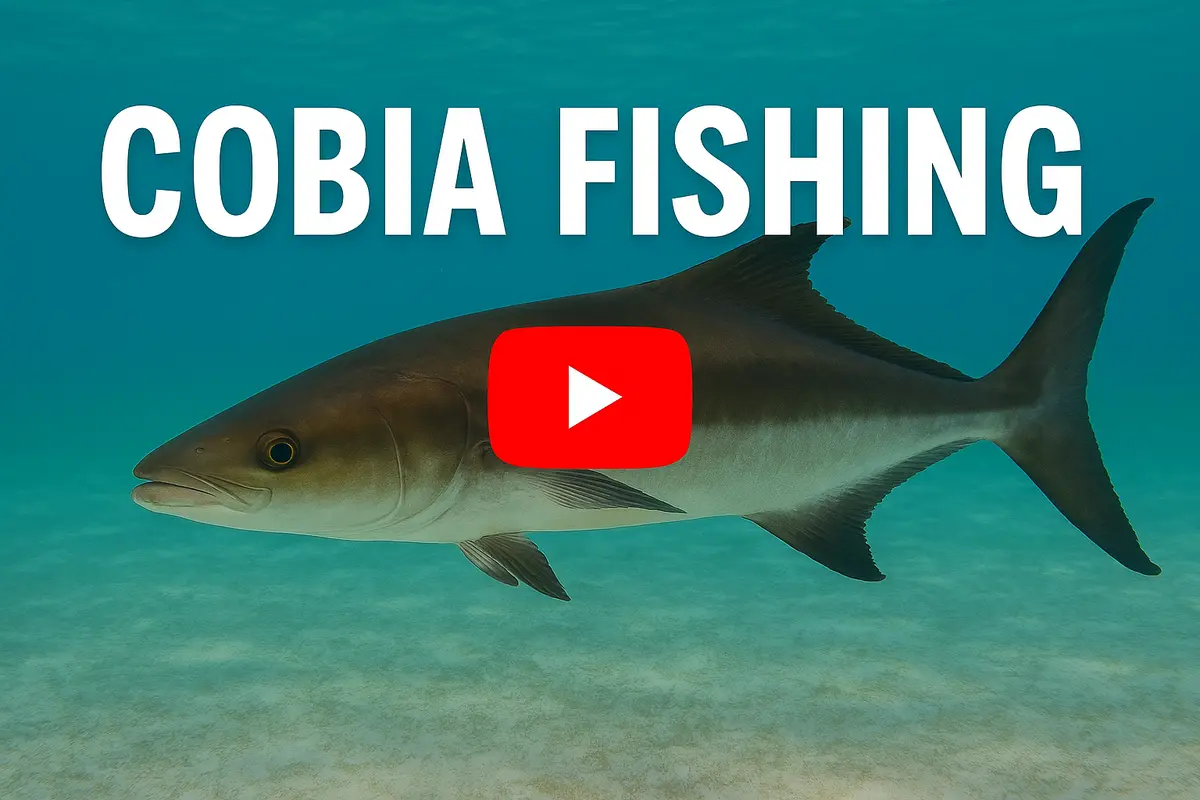Cobia: Habitats - Surf
Table of Contents
- Surf Fishing for Cobia – Mastering the Beach for the Ultimate Sight-Bite
- Surf Anatomy & Seasonal Timing
- Understanding Beach Structure
- Calendar Windows
- Cobia Behavior & Diet in the Surf
- Environmental Factors: Tide, Wind, Clarity, and Temperature
- Locating Fish: Visual Cues, Structure, and Patrol Paths
- The Elevated Advantage
- Ray & Shark “Hitchhikers”
- Color-Change Edges
- Tackle Breakdown: Rods, Reels, Lines, and Leaders
- Lure-Focused Spinning Outfit
- Bait-Soaking Rig
- Top Three Surf Lures and Proven Retrieves
- Natural Baits & Rigging Systems
- Live Eel (Freeline)
- Blue Crab (Fish-Finder)
- Cut Mullet / Croaker (Chunk Rig)
- Hook-Up to Landing: Fighting Strategy on Open Beach
- Regional Nuances & Migration Hot Spots
- Community Wisdom: Tips from Seasoned Surf Anglers
- YouTube Quick-Launch & Related Searches
- Watch It Happen
- Other Popular Search Terms
- Final Thoughts
Surf Fishing for Cobia – Mastering the Beach for the Ultimate Sight-Bite

Photo credit: Pixabay user “callaway_hall”
Surf fishing for cobia is a thrilling blend of visual hunting, tactical casting, and raw power. These bronze-backed bruisers, often topping 50 lb, invade the shallows every spring-to-summer run, sliding just beyond the breakers where baitfish, crabs, and rays congregate. Scoring a beach-bound cobia hinges on understanding the micro-structure of sandbars and troughs, reading subtle color lines, and matching lures or baits to fast-changing current, tide, and water-temperature windows. The guide below distills the most consistent tactics—from rod-length math to retrieve cadence—into a single, surf-specific playbook. Whether you’re an experienced pier regular or a first-time beach caster, the pages that follow give you everything needed to intercept the migration, trigger strikes, and land your bucket-list fish right at your feet on open sand.
Surf Anatomy & Seasonal Timing
Understanding Beach Structure
The shoreline seems featureless at first glance, yet beneath that rolling whitewater lies a series of habitat zones tailor-made for cobia:
| Zone | Average Depth | Role in the Food Chain | Cobia Interaction |
|---|---|---|---|
| Outer Sandbar | 3-6 ft shallower than adjacent trough | Breaks swell energy; bait tumbles over the crest | Fish stage on the seaward edge and surf the lip during flood tides |
| Seaward Trough | 6-12 ft | Funnel for crabs/eels fleeing the bar | Cruising lane; sight-casts land here |
| Breaker Line | Varies with tide | Oxygenates water, disorients prey | Fish briefly loiter during wave-lift, then slide back |
| Primary Trough | 4-10 ft | Holds croaker, mullet, whiting | Anchor cut baits here on ebb tides |
During an incoming tide, water deepens above the outer bar, letting cobia glide effortlessly close enough for a long cast. On the outgoing, bait evacuates the troughs, so setting cut baits just beyond the breaker pays dividends.
Calendar Windows
- Atlantic Coast – Late April to mid-June, peaking once surf temps kiss 70 °F.
- Gulf Panhandle & Alabama – Mid-May through early July, with a secondary spike after summer storms cool surface water.
- Florida East-Central – Early May migration overlaps with silver mullet runs; fish stack along color breaks.
Missing that first warm-water surge often means waiting another year, so tracking buoy trends and wind direction is critical.
Cobia Behavior & Diet in the Surf
Cobia are opportunistic feeders whose menu shifts with location:
- Crustaceans: Blue crabs.
- Baitfish: Finger mullet, menhaden (“LY”), croaker, pinfish, whiting.
- Oddities: Squid or cuttlefish washed ashore; cobia will slash at disoriented cephalopods.
On the beach they show a strong tendency to “ride” larger creatures—turtle backs, stingrays, even small blacktips—scavenging scraps or snatching prey flushed by the host. This shadowing behavior is a prime visual cue for sight-anglers.
Environmental Factors: Tide, Wind, Clarity, and Temperature
-
Tide Phase
- Flood: Best visibility. Fish ride surf lifts over the outer bar.
- Ebb: Set-and-forget bait rods in the trough; scent travels seaward.
-
Wind Direction
- Moderate southeast pushes warm surface water shoreward, concentrating fish.
- North-east winds stack sargassum and can reduce clarity; switch to stink-bait rigs.
-
Water Clarity
- Ideal: blue-to-green with 4–6 ft viz.
- Too clear: fish skittish—scale down leader.
- Too dirty: focus on scent and anchor baits.
-
Temperature Range
- Primary strike range 68 °F to 78 °F.
- Cooler pockets along rip lines often hold forage; cobia gravitate there to thermoregulate.
-
Cloud Cover & Sun Angle
- High sun (10 am–2 pm) lights up bronze backs against sand bottom; wear copper-mirror lenses and gain elevation for maximum sight-distance.
Locating Fish: Visual Cues, Structure, and Patrol Paths
The Elevated Advantage
Standing atop a cooler, ladder, or truck bed increases horizon distance exponentially. At a 12 ft eye-level, you can pick up silhouettes nearly 50 yd farther than at 6 ft—a game-changer in spotting single cruisers.
Ray & Shark “Hitchhikers”
Keep binoculars ready. A saddle-shaped brown outline tucked under a cow-nose ray’s wings is often a cobia. Cast a bucktail 10 ft ahead of the ray, let it sink a heartbeat, then hop twice—big surface boils usually follow.
Color-Change Edges
Where green near-shore plumes meet darker ocean water, a subtle, almond-shaped shadow patrolling the seam is suspect #1. Fish use these edges like submarine highways.
Tackle Breakdown: Rods, Reels, Lines, and Leaders
Lure-Focused Spinning Outfit
| Component | Optimal Spec | Why It Works |
|---|---|---|
| Rod | 9 ft 6 in–11 ft medium-heavy, fast tip, 1–4 oz rating | Launches metal or bucktails beyond bar; fast recovery drives hooks at range. |
| Reel | 6000–8000 size surf spinner, 5.6 : 1 gear, 30 lb+ max drag | Holds 300 yds of 40 lb braid; smooth enough to handle long runs. |
| Main Line | 40–60 lb high-vis braid | Thin diameter for distance, zero stretch for strong hook-sets. |
| Leader | 60–80 lb fluorocarbon, 30–36 in | Abrasion resistance against cobia’s raspy jaw plates and sand. |
Tip: If waves are small and you’re pitching from a pier catwalk, swap the long surf rod for a 7 ft 6 in heavy inshore stick for laser-accurate casts beneath the rail.
Bait-Soaking Rig
- Rod: 10–12 ft heavy, moderate-fast, 6–10 oz sinker rating.
- Reel: 8000–10 000 spinner or low-profile conventional loaded with 25 lb mono backing, topped with 65 lb braid.
- Terminal: Fish-finder slide, 4–6 oz pyramid, bead, 150 lb barrel swivel, 3 ft 80 lb fluoro, 8/0 or 9/0 inline circle. The sliding weight allows cobia to mouth the bait before tension builds.
Top Three Surf Lures and Proven Retrieves
| Lure | Size | Retrieval Keys | Ideal Conditions |
|---|---|---|---|
| Bucktail Jig | 2–3 oz (chartreuse/white or olive) | Cast beyond bar, count to three, then hop-hop-pause. Strikes frequently come on the drop—always stay tight. | Cloud cover, 1–2 ft chop, moderate current |
| Soft-Plastic Eel | 8–12 in rigged on 1 ½–2 oz head | Slow-steady retrieve, intermittent rod pops. Keep lure mid-column where cruising fish can silhouette it. | Clear water, bright skies, light wind |
| Floating Stickbait / Pencil Popper | 1 ¼–1 ½ oz | Aggressive walk-the-dog bursts, two-second pauses. Fish slash instinctively at fleeing profile. | Dawn or dusk, bait showering in wash |
Natural Baits & Rigging Systems
Live Eel (Freeline)
- Thread an 8/0 circle through lower jaw, exiting top lip.
- Tie 3 ft of 80 lb fluoro to a ball-bearing swivel.
- If current sweeps eel topside, add a ¾ oz egg sinker above swivel as a “pin weight.”
- Cast gently with a 10 ft medium-heavy rod and 6000 reel. Eel swims just off bottom, broadcasting distress vibrations.
Blue Crab (Fish-Finder)
- Remove claws; run a 9/0 circle through the base of a swimmer fin.
- Slide 4–5 oz pyramid sinker on mainline, bead, swivel.
- Use a 12 ft heavy rod to chuck beyond breaker; let crab dig in trough.
- Keep rod in sand spike but within reach for violent take-downs.
Cut Mullet / Croaker (Chunk Rig)
- Cut fist-sized steaks; hook once through the tough back.
- Same fish-finder setup; cast to color change or rip return.
- Perfect when water muddies and fish rely on scent.
Hook-Up to Landing: Fighting Strategy on Open Beach
- Initial Strike – Engage drag smoothly; resist the urge to hammer a hook-set when using circles. For jigs, drive the hook with two firm lifts.
- First Run – Cobia often sprint parallel to shore. Step sideways to keep line perpendicular to fish; avoid letting them cross other lines.
- Surf Lift – Time the incoming wave to slide fish ashore belly-first. Walk backwards, rod high, using wave energy rather than brute force.
- Control at Your Feet – Cobia thrash violently when beached. A wet towel over eyes calms them long enough to unhook or measure.
- Handling & Release – Grip pectoral base, never the gills. Revive head-first in knee-deep water until tail kicks.
Regional Nuances & Migration Hot Spots
| Region | Peak Window and Typical Water Temp | Unique Challenge | |
|---|---|---|---|
| Outer Banks, NC | 68–73 °F late April–May | Turbulent shoals; requires long casts over shallow bars | |
| Georgia Barrier Islands | 70–75 °F May–June | Wide tidal range; fish drop into deeper side-channels on ebb | |
| NE Florida | 71–78 °F May | Water can be ultra-clear—scale leaders to 60 lb and downsize jig heads | |
| Central Gulf (Panhandle) | 72–78 °F May–June | Afternoon seabreeze builds; sight window shrinks after noon | |
| Alabama & Mississippi Sound | 72–80 °F late May–early July | Siltier water; cut-bait rigs outperform jigs |
Community Wisdom: Tips from Seasoned Surf Anglers
- “Surf Walk & Glass” Routine – Cover 100-yd beats, stop, glass for five minutes, then keep moving. Mobile anglers see triple the fish compared with static casters.
- High-Vis Braid, Low-Vis Leader – Bright main line tracks lure direction for quick course corrections; fluorocarbon leader remains stealthy.
- Double-Rod Strategy – Anchor a live bait in the trough while actively tossing bucktails. Many anglers hook two fish in one tide window by mixing passive and proactive tactics.
- Tweak Jig Weight to Wave Period – In small surf, a 2 oz bucktail stays in strike zone longer; in head-high breakers jump to 3 oz so lure cuts through turbulence.
- Sun Behind Your Back – Whenever possible, fish with the sun at your back to improve visibility and reduce glare on cruising fish.
YouTube Quick-Launch & Related Searches
Watch It Happen
Click to watch a shoreline cobia hookup and study lure cadence.
Other Popular Search Terms
Final Thoughts
A successful cobia session from the sand boils down to three pillars: read the beach, stay mobile, and match presentation to conditions. Use elevation and polarized lenses to pick up the tell-tale bronze shadows; keep one rod rigged for sight jigs and another soaking natural bait; adapt lure weight and retrieve speed as surf height shifts through the tide. With these fundamentals and the detailed tactics outlined above, you’ll be equipped to turn any stretch of beach into an intercept point for the next bronze torpedo sliding through the shallows. Tight lines and see you on the sand!
Ask AI for More Info
Try our AI assistant for free—sign up to access this powerful feature.
👉 Sign Up to Ask AI
